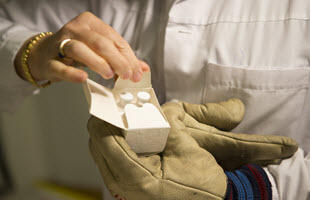Sir Jimmy Savile’s Crimes
The English in full moral panic are never an edifying spectacle. The Jimmy Savile affair is no exception, as self-appointed experts on child abuse, BBC-bashing tabloids and ambulance-chasing lawyers have piled into the fray. The folk devil is inflated by the possibilities of instant celebrity, advance retaliation for the report of the Leveson Inquiry into press misbehaviour, and simple financial gain. In the process, as the British prime minister has observed, a hue and cry is started in pursuit of live devils to stand for the dead one – a veritable witch-hunt. Such chases rarely end well as events of forty years ago are raked over and incidents long since consigned to the bin of bad life-experiences are resurrected.
Sexual relations with women under the age of 16 have been criminal offences in England since the Criminal Law Amendment Act 1885. This superseded earlier common law rules and statutes that had variously specified ages between 10 and 13. The reform was driven by contemporary concerns about child prostitution, at a time when the average age of first menstruation, accepted as indicating physical sexual maturity, for girls throughout Europe was between 15 and 16. There is nothing special about the choice of this age: the parliamentary debates around the 1885 Act considered proposals for fixing the age at 15 and at 18. Even today, European countries vary between 13 and 18, with most settling for a lower age than England. Are young women necessarily less well protected in France (15), Germany (14) or even Spain (13)? The average age of first menstruation in Europe is now between 12 and 13. The age of consent represents the choices that a society makes, with no direct connection to the age of physical sexual maturity.
The prime minister has rightly observed that we are entitled to feel moral repugnance towards those who engage in sexual relations with children. However, the definition of childhood is historically and socially variable and it may not be the most helpful way to approach this issue. An acquaintance who recently attended a training course in this area told me that this introduced a useful distinction between paedophilia and ephebophilia. The true paedophile is attracted only by those who show no signs of sexual maturation. Savile does not seem to have been a paedophile in this strict sense. The ephebophile is attracted towards those who show some degree of maturation. This is acknowledged to be difficult to distinguish as a disorder, as indicated by the routine commentary on some tabloid websites about the physical development of 14-year old actresses.
In practice, the law recognizes a grey area where many moral entrepreneurs only see black and white. Ever since the Gillick judgement in 1985, for example, it has been lawful for health workers to supply contraceptives to girls under the age of 16 if they are considered capable of understanding the implications. Similarly, although the UK does not have a so-called ‘Romeo and Juliet’ exemption, public prosecutors rarely consider that it would be in the public interest to bring criminal charges against young people who are close in age unless there is evidence of coercion or abuse. As such, there is little doubt that Savile would have been prosecuted, had sufficient evidence of his actions been available in his lifetime.
More worrying is the wave of concern among ageing rockers, reported by Max Clifford, the celebrity publicist, about casual sexual contacts that may be better remembered by their partners than by themselves: in the context of the 1960s and 1970s, many relatively young men found themselves the centre of sexual attentions within the ‘groupie culture’ of the time, not unlike some Premier League footballers today. The atmosphere is well captured in a contemporary novel, The Tale of Willy’s Rats (1974) by Mick Farren. Until researching this blog, I had not realised how rare copies of this book are, although fans have now posted an electronic version. Farren was a rock musician and journalist at the heart of the celebrity world of the period. Charles Shaar Murray’s review for the New Musical Express commended the book’s ‘laconic verisimilitude’ and insider authority. It is neither great literature nor a simple roman à clef but it does incorporate some incidents that have become notorious from other sources. The book includes a scene where Farren’s protagonist, Lou, is picked up at a party after a Canadian gig by a girl, who invites him back to her apartment and into her bed. After they have had sex, Lou assembles various clues and asks her how old she is. The answer is 13. In some respects, Lou is the moral centre of the book and he is troubled by this: within an atmosphere of generalized debauchery, a line has been crossed and he makes a reasonably hasty exit. What is more interesting, though, is the matter-of-factness with which the incident is presented. It is not suggested that Farren is fictionalizing any personal experience but the tone of the writing does not present this encounter as exceptional within the circles he is depicting. The question is whether we really want to treat such incidents as a matter for criminal investigations and prosecutions forty years after they occurred.
The issue of civil claims is also important. There has been a good deal of talk about breaches of a duty of care by the BBC and other institutions. Much of this is lawyering by media: when you have a weak case, a standard tactic is to raise the defendant’s reputational costs in the hope that they will settle to minimize the adverse publicity. For a duty of care to exist, however, a risk must be ‘reasonably foreseeable’. What would a likely defendant have known about sexual abuse in the 1960s and 1970s that might have allowed them to foresee a risk?
As it happens, I was part of the biggest study of child protection decision-making ever carried out in England, between 1977 and 1983. Colleagues and I reviewed the most recent specialist literature and became aware of sexual abuse as an emerging issue – CH Kempe, who pioneered the rediscovery of child abuse in the 1970s, identified it as a ‘hidden pediatric problem’ in a 1977 lecture. We took this into our fieldwork and discovered that awareness in England was virtually non-existent. Indeed, we may even have played a small part in raising the issue in the agencies we studied. It only emerged into national prominence in 1987, with the attempt by paediatricians in Cleveland to apply US research, which led to their demonization by local politicians and tabloid media. Although their diagnoses were substantially endorsed by a judicial inquiry, most practitioners drew the conclusion that there would be little public support for energetic intervention. In effect, what I have called the ‘rule of optimism’ kicked in, that identification should be avoided unless there was overwhelming evidence to the contrary. This is the background against which many of Savile’s exploits played out. In England, it is hard to justify claiming a ‘state of knowledge’ in health and social care much before the mid-1980s: for other institutions, that date should probably be brought forward by several years, possibly even into the 1990s.
Clearly, Savile was a career sexual predator, whose actions raise important questions about the culture and practices of the last half century. Those questions deserve to be discussed in a more balanced fashion than the present feeding frenzy allows. They do not, however, justify an anachronistic attempt to impose the standards of the 21st century on the 20th. The protection of children and young people raises serious issues about what interventions are likely to be effective and what counter-productive, about the balance between suspicion and trust in interpersonal relations and institutional behaviour, and about the fit between law, morality and psychiatric disorder. These issues are too important for the present wave of symbolic politics, a fake indignation that seeks salacious stories to sell tabloid papers and to promote a social and political agenda that would take us all back to some presumed Golden Age which looks very much like the 1950s. I am old enough to remember those days – and there was nothing golden about them. We have moved on a great deal – especially when a prime minister can publicly caution against a witch-hunt of gays – and the challenge here is to look forward rather than back. What is appropriate protection for girls and boys who are physically mature but may not have the emotional or cognitive capacity to deal with their sexuality? Where are the safe places for them to bring concerns? What are the appropriate restraints on those who would take advantage, albeit unthinkingly?
READ RELATED ARTICLES
























































































“Clearly, Savile was a career sexual predator”, was he? Anymore than lots of famous rich people who have women, young or otherwise looking them up for the purpose of sexual congress? I am just idly searching the net, looking for an article that shows any actual physical evidence against Jimmy Savile. For instance, copies of the complaints made against him in the 60s, do these actually exist still? Is there any evidence at all, except for the hordes of possibly neurotic loons, who come out of the woodwork for publicity and money? My curiosity was pricked by an interview with… Read more »
If you want exhaustive coverage of the entire fiasco track down moor larkin blogspot subtitled Jimcannotfixthisblogspot moor examines every piece of ‘evidence’ every report, commission, operation yewtree etc etc and lays it all out for all to see the falsity, Kant and double dealing that went on, also another blogger, rabbitaway adds further expose to the steaming mess and finally Susan cameron-blackie, who went under the nom de plume “Anna Raccoon”,now deceased a family court lawyer and former resident at the duncroft school where back in the 60s js was supposed to have had his pick of the girls who… Read more »
Jimcannotfixthisblogspot and the rest of the sources quoted so eloquently doesn’t sumount to guilt beyond a reasonable doubt as judged by ones peers in a Court of law and thus surely the fact remains of innocence until proven guilty? A few armchair detectives can’t take the place of the full CPS process. Much too many lawyers relief I’m sure🤣🤣
I have to agree. How much cold hard objective physical evidence is there? This country is built on a judicial system requiring innocent untill proven guilty. It would seem that requirement counts less and less in this day and age! While I don’t minimalize the importance of each person’s statements, unfortunately it doesn’t amount to objective evidence and that fact really needs to be considered before condemning any person.